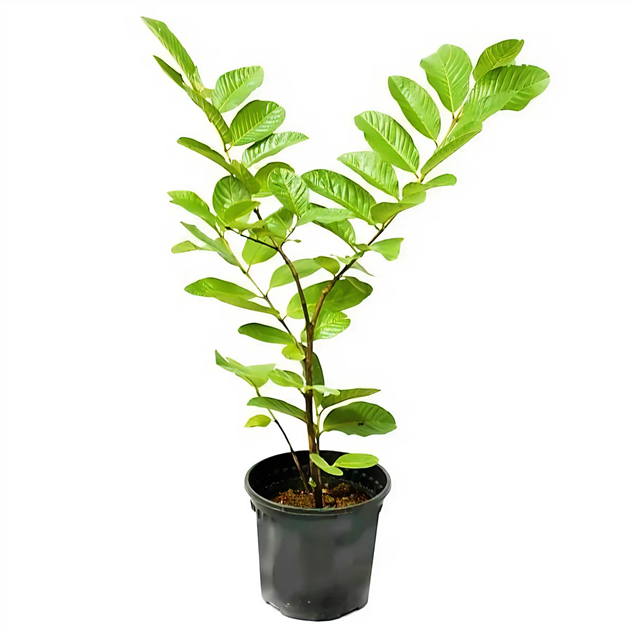Guava, scientifically known as Psidium guajava, is a tropical fruit tree belonging to the Myrtaceae family. It is native to Central America but is now cultivated in many tropical and subtropical regions worldwide. Guava is well-regarded for its sweet and aromatic fruits, which are enjoyed fresh, made into juices, jams, and desserts, and used in a variety of culinary preparations.
Landscape Use:
Guava trees are commonly cultivated in orchards, home gardens, and commercial plantations for their delicious fruit.
They can be used in landscaping as shade trees or as attractive ornamental specimens in tropical and subtropical regions.
Guava trees have a dense canopy and lush foliage, providing privacy and shelter for birds and other wildlife.
Special Considerations:
Guavas may take a few years to bear fruit after planting, depending on the variety and growing conditions.
Pruning is often done to remove dead or weak branches, shape the tree, and improve air circulation within the canopy.
Guava trees are susceptible to pests and diseases, so regular monitoring and appropriate care are important.
Overall, guava is a highly esteemed tropical fruit, beloved for its sweet taste, delightful aroma, and versatility in culinary uses. Its popularity extends worldwide, and it remains a cherished fruit in many cultures, where it is appreciated not only for its deliciousness but also for its nutritional value and various health benefits.
Here’s an overview of the guava tree and its fruit:
Plant Characteristics:
Leaves: Guava tree leaves are oval or elliptical with a leathery texture and a glossy appearance. They are arranged oppositely on the branches and have prominent veins.
Flowers: The tree produces small, white, or pale yellow flowers with numerous stamens. The flowers are typically solitary or in small clusters, and they are often very fragrant.
Fruit: The guava fruit is a fleshy berry, usually pear-shaped, round, or ovoid, depending on the variety. The skin of ripe guavas can be green, yellow, or pink, and the flesh is soft, juicy, and often filled with many small, edible seeds.
Cultural Requirements:
Light: Guava trees thrive in full sunlight and require several hours of direct sunlight each day to produce abundant and high-quality fruits.
Temperature: Guavas are tropical trees and prefer warm to hot climates. They can tolerate brief periods of light frost, but extended freezing temperatures can damage the tree.
Watering: Regular and consistent watering is essential, especially during dry spells and when the tree is flowering and fruiting. Guavas are somewhat drought-tolerant once established but perform best with adequate water.
Soil: Well-draining, sandy-loam soil with good organic content is ideal for guava trees. They prefer slightly acidic to neutral pH levels.
Fertilization: Guava trees benefit from regular fertilization with a balanced fertilizer during the growing season to support healthy growth and fruit production.






